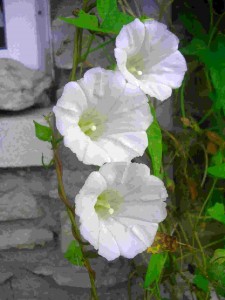
By Bob
I’ll write many articles about meditation, guided meditation and the shamanic journey, but this first one is to provide you with a quick overview.
Few people can agree on what constitutes a state of mind different from either the waking or sleeping states. Generally though, I’ll use the term “altered state of consciousness (ASC),” which indicates a state of awareness different from the normal waking state. (More on Wikipedia) And that’s where meditation and the shamanic journey can both be loosely classified. Anthropologist Michael Harner further delineates a “shamanic state of consciousness” in his classic book, Way of the Shaman.
Both practices can be quite beneficial to one’s well being. Research on positive gains resulting from meditation are widespread, while results from more and more studies are currently being reported on the benefits of shamanic-like practices, including drumming. These include the powerful production of helpful endorphins and other naturally-produced body chemicals that boost the immune system.
Generally, meditation induces relaxation, peace of mind and a sense of well being, and is undertaken as a service to one’s self, where healing, understanding and wisdom can grow. This, of course, will eventually influence those around you in positive ways, so your practice is a service to others, in one way of considering it.
The shamanic meditation / journey is undertaken to broaden one’s awareness beyond ordinary reality in order to actively be of service to one’s self or to someone else through healing procedures or ceremonies, and to discover knowledge or to otherwise connect with archetypal beings or energies which shamans have identified for thousands of years. Often, in seeking healing for someone, a shaman will encounter spiritual beings who agree to return with the shaman in order to be of service to the shaman’s patient. In other instances, the shaman may seek to recover a patient’s soul part that splintered away during a traumatic experience in the person’s past. This is called “soul retrieval.” And in still other cases, the shaman may, while in the altered state of consciousness, attempt to remove through a ceremony known as “extraction” an illness, disease or other energy matrix which may be harming the patient.
These practices, while potentially seeming odd to some people in modern America and other Western cultures, have successfully served humankind since the beginning of its collective consciousness. And now, thanks to Harner and others in indigenous and traditional cultures who are willing to share their knowledge, these practices are making a comeback.
Though I don’t see meditation or shamanism as complete alternatives to modern medicine, they are certainly effective aids in any healing process, and can be seen as complimentary approaches in a rather recent trend in medicine to incorporate treatment for the “whole person,” mind, body and spirit. This “integrative medicine” approach is certainly well overdue, and is bringing civilization full circle to the roots of healing.
